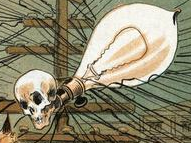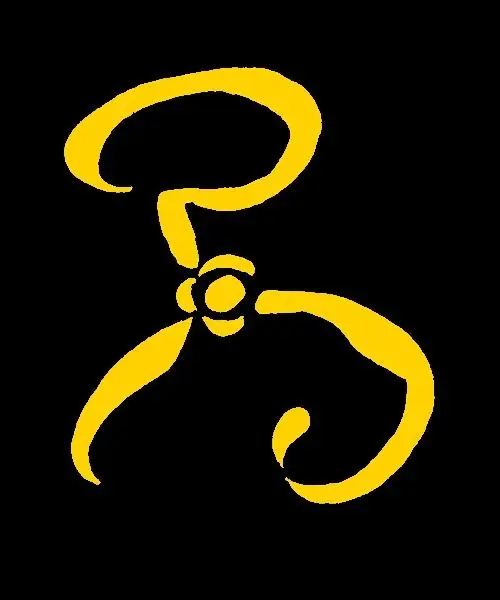quality post
Thanks!
Trying to reconcile the maps of BG1, BG2, BG3 and the actual map of Faerun in the books seems impossible.
I haven’t tried with 1 and 2. The BG3 in-games maps are useless except as notes, but context clues, dev statements, and prior material helped quite a bit, as did paying $100 for the official mapping software.
TL;DR:
Elturel = 215 miles east of Baldur’s Gate
The Grove = 200 Miles East of Baldur’s Gate
Moonrise / Reithwin = 193 Miles East of Baldur’s Gate
As noted in my last post, my partner and I have been trying to pinpoint the locations in Baldur’s Gate 3 on the Sword Coast map.
Larian, in their Gameplay Demo, revealed two vital bits of information. First, that the nautiloid crash site was on the Chionthar and second, that it was approximately 200 miles east of Baldur’s Gate. The Blighted Village, Goblin Camp, and everything else should be relatively close (within 5-10 miles) of The Grove. In-game text suggests that The Blighted Village, Moonhaven, is on the border of the lands controlled by Elturel, but where that border is or what it means is squishy.
Moonrise was more difficult. The only out-of-game reference to Moonrise was in an old adventure, and the only map we could find with Moonrise definitively mapped was in the old Forgotten Realms Interactive Access mapping tool. We got our hands on a copy and proceeded to measure distances. The results are available above.
Caveat: The maps of the Sword Coast have changed over time. Sometimes, TSR / Wizards changes distances dramatically, so this estimate is only that. Take this with a grain of salt / as a fun project we undertook to better understand how in-game locations meshed with Sword Coast locations.
Nice, thx :)
Welcome!
Maps during similar periods of Earth history have been laughably inaccurate, so we assume that Faerunian cartographers are offering “best estimate” distances.
Hard disagree on this as a gauge, they have access to magic that can answer universal truths. If a cartographer or merchant of that time period had the access to those answers they’d’ve been uses then too. You can cast a spell as simple as Message (with a known max distance) along with Find Familiar to measure distances as you document, and you have wizard researchers that have access to Wish (or clerics that talk to gods) for creating fixed, atomically precise, measuring tools.
I don’t disagree with the rest of your post but this addition really weakens your argument because they have so many more resources in the setting.
Edit: oops this was meant to reply to one you your other replies
Eh, “known” max distance is game logic.
You can keep casting it till it stops in a measured location, then know how far you can cast it and have that as a measure later. Think of it like having a slingshot that shoots 120ft but in a straight line.
@optissima @GBU_28 don’t want to necropost, but just stumbled upon that discussion.
I take the distance in the rule more like game mechanics.
If we take the description of the magic in the FR, I would say distance depends on the density of the threads of the weave, the dead magic area, etc. So not very dependable.
On the wish spell, I could agree though, that you could get more accurate info via this.
There are a couple things that need addressing in this line or argument.
First is a certain assumption of rigour in logic; rigour in proof was a very nebulous thing until concrete efforts to codify rigour in the 19th century. We used to simply assume Euclid’s Elements was true because it was old, reasonably argued, and some easier results were verifiable. There’s no guarantee that Forgotten Realms wizard, who lives in a magical late renaissance analogue, would hold a scientific philosophy similar to our modern philosophy, rather than having a scientific philosophy similar to that of a renaissance scientist.
Supplementary to the first point, there is also the question of religion. Given how much the Catholic church impeded scientific progress that challenged their worldview, we could expect the many churches of the FR pantheon - many with opposed views to one another - to interfere with scientific progress.
The second point comes from the measurement units used in the rulebooks of the game. Unless we’re accepting that FR society independently came up with the imperial system or a measurement system that translates rather cleanly to the imperial system, we can assume that the measurements in the game book are approximations for the purpose of ease of use to the player. I doubt a wizard in canon is calling a distance “about 10 feet” and Ed Greenwood is just doing the common fantasy thing of “translating their language and measurements to a form understandable by earthlings.”
The third point is the Wish issue. The Wish spell is undeniably the strongest spell in the canon and requires a wizard of tremendous power to cast. Given the hubris of powerful wizards in the Forgotten Realms and fantasy in general, it’s doubtful that a wizard would use their one 9th level spell per day to either altruistically progress the knowledge of the realm or to improve mapping methods to sell a better map. If a wizard were to use their strongest spell for something as trite as monetary gain, That same knowledge gained from a Wish could be hoarded and exploited for substantial personal gain.
Finally, there’s the time commitment. You mentioned using Find Familiar to measure distances but that still requires a wizard in the field, essentially using a sentient trundle stick. Mapping requires a ridiculous level of effort from a huge team of surveyors, and is almost always backed by a government. The Sword Coast, where all the main plot happens in FR canon, is a handful of city states and frontier towns in a wild region. The Open Lords of Waterdeep would probably have hired a set of wizards to accurately calculate the acreage of farmers fields in the immediate vicinity. For something like the distance from Baldur’s Gate to Elturel, distances would be approximate, about 200 miles or 10 days travel with time to pray at every shrine.
I’ll expand later when I have my coffee, but here’s a quick rundown:
1st: that is because we lacked the access to universal answers, if we had access to answers earlier we’d have gotten them.
1b: Why are you presuming that the religion is a rip from Catholicism, it has similar features but is not the same. It coexists with magic. Other religions (Bhuddism and Islam) allowed the sciences to bloom.
2: I never claimed that our measuring system was the same as theirs, simply that they do have a standard that is reproducible. It could be ‘1 dingle = the width of a kings foot’ or ‘a wizard created a measuring standard with the length of 1/73rd of a fireball burn circle’ for all it matters.
3: Wish was the extreme example, but an easy example (all it takes is one pissed wizard one of their 365 annual wishes to ask for ‘maps to be accurate’). In a more expanded consideration, a cartographer could access flight through a spell immediately gains accurate top down views of areas, greatly increasing accuracy and removing one of the huge limitations of mapmaking (getting a vantage point that gives you a good view of an area!). On top of that, it moves at a measurable, fixed, max speed. Just imagine a mideval monk with helicopter access and think about how much more accurate they would be.
4: Find Familiar scroll is 50gp and a professional cartographer would certainly find that a reasonable investment for having a traveling companion that can accurately follow commands and has a comprehension of measuring. No wizard required.
Some good points. I’m just going to continue this discussion because it’s interesting and it helps me prepare my games to consider these things.
1: Universal answers don’t necessitate universal acceptance, and it can make for more interesting lore when that’s the case. As an example: in the lore of Legend of the Five Rings, it’s common knowledge in the Empire that the official map of the Empire has a massively inconsistent scale, with journeys of similar charted length having up to a threefold difference in travel time. Savvy travellers know to plan accordingly, but no one would ever question Imperial doctrine, as the charting of the Empire was an act of a very real and tangible living god. This is where I got my praying at every temple comment; it’s common for people to avoid accidentally badmouthing the Empire by saying “I took longer than expected as I took every opportunity to honour my ancestors at every shrine on the road.”
1b: The pantheon of the Forgotten Realms is ever expanding and there are gods in that pantheon that are opposed to Mystra, as well as luddite gods who are oppose the gods of innovation such as Gond. Gondians certainly promote the advancement of science, and Mystrans and Oghmans promote the advancement of magic to a very certain extent, but there are gods in the pantheon who would task its worshippers with direct opposition of these missions, if for nothing else than to piss off their rival god.
2: This comes back to point 1. Different states will have their own standards of measurement, often using the same name, and the usage of these standards are very often more political than logical. A famous example from history is Napoleon’s height. Napoleon was “5 foot 2 by the French measurement and 5 foot 6 by the English measurement,” which made him a French adult man of average height. It was a common political tool to report him in the British Press as 5 foot 2, thus implying that he was short of stature.
Imagine the compounding issue of different species interacting in the Sword Coast. A human-majority patriarchal city state may define an inch as the average length of the the second knuckle of an adult human male’s middle finger, while an elvish-majority patriarchal enclave may define it exactly the same but for an elf’s finger. These slight discrepancies aren’t an issue until they can be exploited for political gain; an elvish embassy may be established at a distance no closer than a mile to the Palace of the Magistrates, but there’s roughly a 10 human-yard difference between an elvish mile and a human mile.
If someone casts a spell asking for a measurement and they are told “10 miles,” is that 10 miles from their perspective, 10 miles from the perspective of whoever invented the measurement spell, 10 miles according to some third “universal” perspective, or something else entirely?
3: Again from my previous comment, the precise limitations of spells are assumptions and generalisations made for the purpose of codifying into a game. In the actual fiction, spells are quite variable dependent on the caster and their abilities. The only general assumption we can actually make is that a set of repeatable actions yield roughly the same result: if you rub a glass rod with a bolt of fur and sing the chorus of Tubthumping backwards, lightning appears. The reason that in the current edition of the game we have somewhat concrete descriptions of spells is that we as the players require a certain level of abstraction in order to play the game; The GM shouldn’t need to have an idea of wind speed, the aerodynamics of the flier, and all other forces in order to make a quick decision to determine how the flier flies. Some randomness of outcome is still evident on the modern game rules, such as the damage from spells being random and spells like sleep affecting a random number of creatures. Older editions were a lot more meticulous with this.
Edit: specifically tackling Wish, assuming even a perfect casting would not yield a perfect map. Check out the Coastline Paradox for a real world example of how natural bodies such as coastlines fail to have well-defined length. No amount of arbitrary precision measurement is going to change the facts that coastlines and waterways have fractal dimension.
4: At least in 5e rules as written (and I dislike this and usually houserule it when forced to play D&D), with the exception of protection scrolls, reading a spell scroll requires caster to have the given spell on their spell list.






